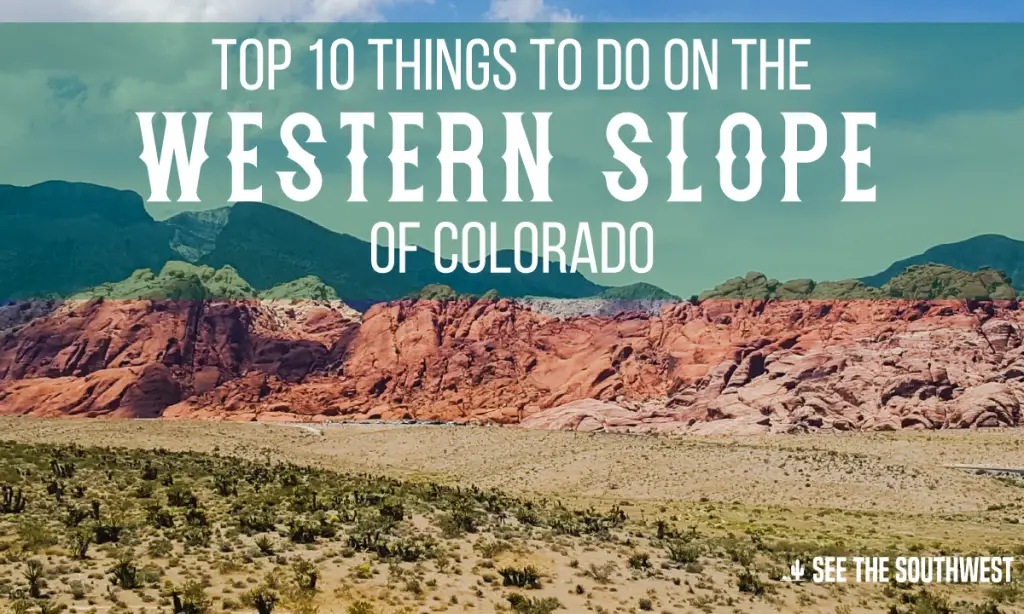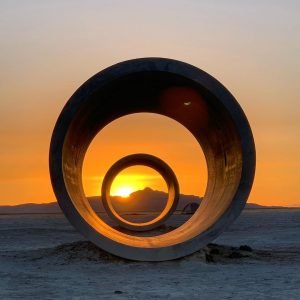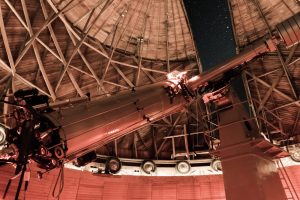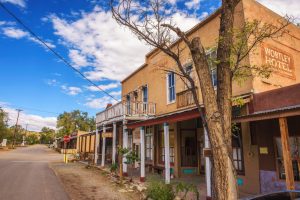
Colorado has two distinct sides to the state, split in the middle by the great Rocky Mountain Range. The Western Slope refers to everything west of the continental divide. The area is drained by the Colorado River, and its tributaries, the San Juan River and the Green River. Unlike the eastern side of the state, which receives far more moisture, the Western slope sits on the Colorado Plateau and is primarily comprised of high desert, sculpted cliffs and red rock country. That being said, the contrast between blue sky and warm stone is that much more beautiful. There are plenty of things to see and do along the Western Slope. Here are our Top 10 picks in no particular order.
Black Canyon of the Gunnison National Park
The Black Canyon of the Gunnison in Colorado is the deepest and steepest canyon in the United States. It is even deeper and steeper than the Grand Canyon of Arizona! While the view is not quite as awe-inspiring as the Grand Canyon’s vast vistas, the Black Canyon is equally stunning simply because it is hard to believe something that deep can be so narrow.
Mesa Verde National Park
Mesa Verde, Spanish for green table, offers a spectacular look into the lives of the Ancestral Pueblo or Anasazi people who made it their home for over 700 years, from A.D. 600 to 1300. Mesa Verde National Park protects nearly 5,000 known archeological sites, including 600 cliff dwellings. These are some of the best preserved Pueblo Dwellings in the country.
Colorado National Monument
Colorado National Monument has some of the best redrock expanses, deep canyons and sandstone towers in the Southwest. The 31-mile square park has hiking and horseback trails, picnic spots and stunning scenery. The paved road the park allows easy access (and great bike rides) to gorgeous locations like the Coke Ovens, Independence Monument, and Monument canyon. Less well known than Arches or Canyonlands National Park, this is a hidden gem on the Western Slope.
The Grand Mesa
The Grand Mesa is the largest mesa in the world and covers roughly 500 square miles. The mesa stretches 40 miles east of Grand Junction, Colorado, nestled between the Colorado and the Gunnison Rivers which helped to shape this high mountain retreat. Reaching heights of 11,000 feet, the mesa is a cool, green oasis high above the semi-arid and desert terrain of western Colorado. The view both atop the mesa and from its edges are nothing short of spectacular.
Dinosaur National Monument
About 145 million years ago, the northern parts of Utah and Colorado were a low-lying plain crossed by several large rivers and many smaller streams. It was home to dinosaurs such as Apatosaurus (better known as Brontosaurus), Diplodocus, Stegosaurus, and other vegetarians. During a great rain, the river floodwaters washed a great number of carcasses and bones onto a sandbar. Layers of sediment were deposited on top of the sandbar, fossilizing and protecting the bones. Then the rocks were uplifted and titled, where wind and weather exposed this long lost graveyard now known as Dinosaur National Monument.
Rifle Falls State Park
At Rifle Falls State Park, triple waterfalls plunge over a limestone cliff in a stunning display of nature’s beauty. The breathtaking falls crash and thunder down from above creating a misty world where lush foliage thrives. The park offers terrific hiking trails, small caves to explore and great picnic and camping spots in a lush riparian environment.
Curecanti National Recreation Area
Sparkling blue waters, soaring mountains, needle spires and pristine wilderness — these words capture the natural wonder of Curecanti National Recreation Area in Southwestern Colorado. At the heart of Curecanti is a trio of reservoirs along the Gunnison River. Blue Mesa Dam, situated just above the Black Canyon of the Gunnison, is at the head of a 9,000 acre lake — the largest lake in the state of Colorado. Morrow Point Reservoir is next in the chain of lakes, followed by Crystal Reservoir.
Maroon Bells Wilderness Area
The Maroon Bells located in the Elk Mountains of the White River National Forest in Colorado are the most photographed peaks in all of North America. Comprised of a set of peaks topping 14,000 feet, these gorgeous mountains strike a remarkable silhouette against the Colorado sky. The Maroon Bells are an angler’s, hiker’s and photographer’s paradise.
Durango & Silverton Narrow Gauge Railway
Explore the majesty of the San Juan Mountains aboard the Durango & Silverton Narrow Gauge Railway. The railway runs between the old mining towns of Durango and Silverton, Colorado. The tracks run along the steep sides of a mountain high above the Animas River. The view alone is worth the ride. Huge mountain peaks soar above the slowly moving cars, while the canyon carved by the Animas River drops into the depths just a few feet from the train. Trestle bridges rattle beneath the wheels as you span huge sections of canyon. Mountain goats and sheep are not uncommon sights, as well as a wide variety of birds and small mammals. But the view might just be outweighed but the sheer fun of riding the train!
San Juan Skyway
From Durango to Ridgeway than on to Cortez and back to Durango, the San Juan Skyway climbs through the dazzling and jagged San Juan Mountains before descending south to the cliff dwellings of Mesa Verde National Park. The 232-mile trip takes about 5-7 hours or several days if you want to stop and see things along the way. It spans elevations from 6,200 feet near Cortez to 11,088 feet at Red Mountain Pass. You might want to stop at Mesa Verde National Park and see the pueblo ruins, or take a ride on the Durango & Silverton Narrow Gauge Railroad. Or you could stop and shop or dine in Durango, Silverton and Ouray. Or get out and hike at Box Canyon Falls or at any of the trails in Telluride. It is worth stopping at every overlook along the route because there is something new to see at each location — plunging waterfalls, soaring peaks, old mine sites, Native American ruins and much more.




